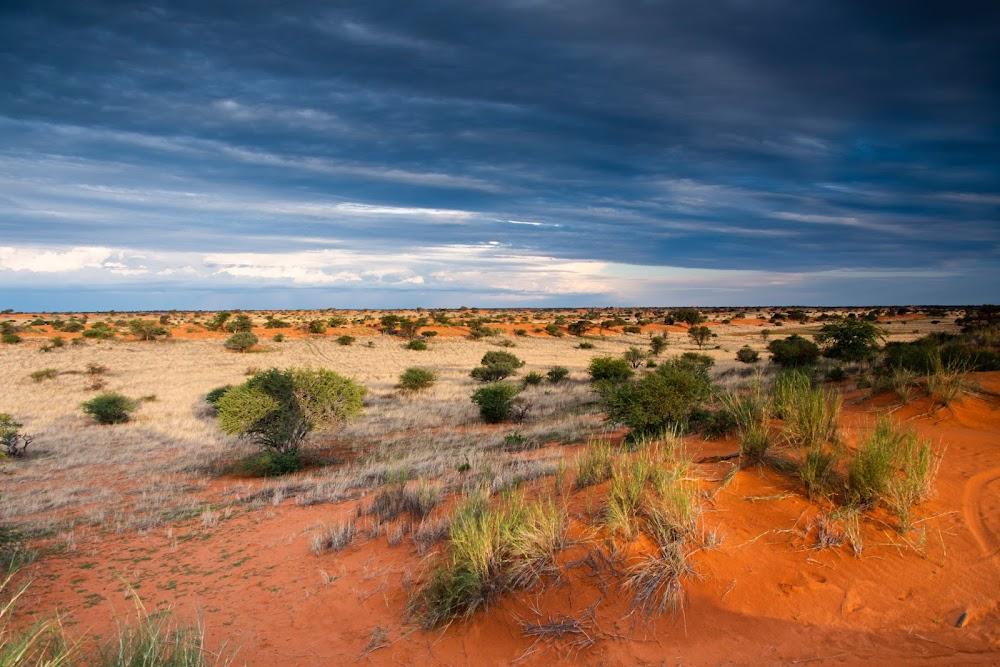Zanne Brink
Africa-Press – South-Africa. As a member of the Endangered Wildlife Trust’s (EWT) Drylands Conservation Programme, I am confronted daily by the harshness of the arid regions in Western and Northern Cape and the vulnerability of the communities that live in this landscape.
It is during my interactions with communities and landowners that I often hear the words: “The land has been transformed”, or “this is degraded land”.
But, what does this mean?
Degradation as a noun refers to destruction or disintegration. When referring to land degradation, we speak to the process where land becomes less healthy and productive or where the quality of the soil and environment has been reduced, due to a combination of factors, be these human activities or destruction caused by natural disasters.
Landscapes such as the Succulent Karoo, the Knersvlakte and the Kalahari regions are South Africa’s drylands. Each landscape holds a special beauty, hides a vast array of plant and animal species and is a region where the unique and ancient culture of the people is expressed through their love of the land.
South Africa’s second National Action Programme to Combat Desertification, Land Degradation and the Effects of Drought states desertification affects about 70% of drylands and 73% of Africa’s agricultural lands are degraded. Our country’s drylands cover about 400,000km2 — a landscape characterised by water scarcity, low and erratic rainfall, heatwaves and occasional floods.
The UN Environment Programme (UNEP) states about 91% of South Africa’s landscape is drylands, making the country susceptible to desertification. This creates several environmental challenges for South Africa in food security, poverty and growing urbanisation and is intricately linked to climate change and biodiversity loss.
The drylands of the northwestern part of the Western Cape and the Northern Cape are characterised by limited natural water resources and large open areas spotted with quiver trees and acacias and where plants grow relatively low to the ground. The average annual rainfall in the landscape is between 50mm to 300mm a year, making the arid regions sensitive to climate variability, seriously impacting endemic plants and animals that have adapted to this environment. For the animals, survival here is dependent on evading drought or harsh periods through migration or endurance. For the plants, it is not only about durability but also about soil, water and vegetation management. This is a region constantly exposed to extreme weather and climatic occurrences, such as droughts and heatwaves, making it more vulnerable to rapid and devastating environmental change and land degradation.
In arid regions, even mismanagement that occurred 50 years ago remains visible in today’s landscape. This is a region where farming communities and townspeople speak openly about the effects of land degradation and the effects of climate change on their lives and the land and the need to restore naturally degraded land and areas destroyed by man-made activities. They understand their exposure because of their dependence on the environment and natural resources to survive.
But, it is not all doom and gloom. In this area, community-led conservation actions in collaboration with NGOs such as the EWT have become the norm. Willing landowners and land custodians are working towards rehabilitation and changing historical farming practices to ensure continued functioning ecosystems. This restores fragile areas and the landscape’s cultural heritage.
Through the support of the Table Mountain Fund and the WWF Leslie Hill Succulent Karoo Fund we have been able to focus on biodiversity in areas previously overlooked and raise awareness about the work being done in these areas as people learn more about the impact of the environment and climate change on their lives. Through this work we are able to collaborate with the private sector, landowners, government and other NGOs to work towards adaptive management and, to a large degree, conservation through various biodiversity stewardship initiatives.
Awareness of endemic species allows greater understanding of the threats to species, habitats and ecosystems, resulting in a willingness to adapt management styles to ensure habitats are conserved. This is evident in areas where farmers have incorporated conservation into their management styles, focusing much of their attention to how interconnected a community is with its land. Through our work with the farming community and the community at large, the EWT has been able to assist in ensuring unique areas and diverse endemic species are conserved and the youth are educated about the fragility of the environment.
Best practice management is not an all-round solution for this landscape given the environmental and biological diversity of arid regions. Examples in this landscape vary. In some cases minor changes to farming regimes to incorporate eco-tourism into their operations have shown success, while other properties are only suitable for farming. On the other hand, others may qualify as conservancies or protected areas.
Because a large part of South Africa is classified as semi-arid and will be severely affected by climate change and unsustainable developments and practices, greater attention needs to be given to the increased threats being faced by the drylands. This is a landscape where the concept “survival of the fittest” rings true — an area where the survival of drylands species and ecosystems requires urgent and continuous collaborative conservation efforts to mitigate the impacts of drought, desertification and degradation.
The EWTs efforts in the drylands strategic conservation landscape aims to promote, sustain, secure and/or restore the ecological integrity of unique drylands biodiversity by working with land custodians, communities and other stakeholders to conserve the habitats in which threatened, elusive and endemic species occur. Our aim is protect, conserve and restore our greatest heritage — the land.
Source: TimesLIVE
For More News And Analysis About South-Africa Follow Africa-Press






